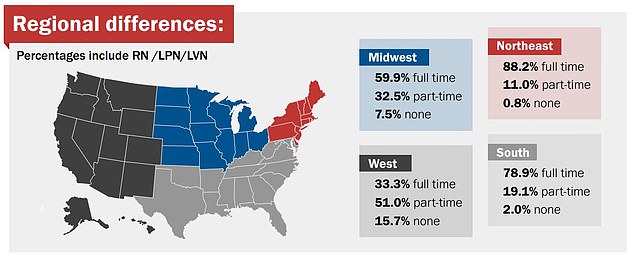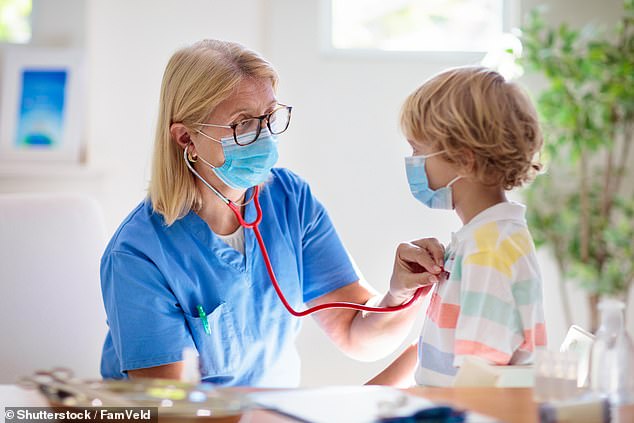More than a third of US schools don’t have a single nurse on-site – despite record rates of disease and mental health problems in students
- READ MORE: Kentucky school district sends students home due to ‘triple pandemic’
More than a third of U.S. schools do not have a single full-time school nurse, despite rates of student illness and mental health problems at record highs.
According to a 2021 survey by the National Association of School Nurses (NASN), only 66 percent of K-12 schools have access to a full-time school nurse.
California has For example, the state has only one nurse for every 2,410 students, while Missouri has about one nurse for every 718 students.
There is evidence that schools that do not have a nurse on site are three times more likely to be absent due to illness than schools that do.
This comes as America grapples with high rates of chronic illnesses among K-12 students, including diabetes and asthma, as well as record rates of mental health issues, which have been shown to have been exacerbated by school closures during the Covid pandemic.

According to a 2021 survey by the National Association of School Nurses (NASN), only 66 percent of K-12 schools have access to a full-time school nurse.

The pandemic placed additional strain on school nurses as they had to track cases and exposures (stock image)
Schools also have difficulty recruiting and retaining nurses because hospitals offer far higher salaries than schools and there is also a national shortage of nurses.
Jodi Bobbitt is the sole school nurse for the 600 students at William Ramsay Elementary in Alexandria, Virginia.
It is the point of contact for medications, health care education and routine health checks.
She is also responsible for monitoring student vaccinations, distributing local health resources to parents and communicating sensitive messages, such as sexually transmitted infections and signs of depression and anxiety in students.
In her last job, she worked in two or three school buildings in the same district.
The pandemic placed additional strain on school nurses as they had to track cases and exposures.
They also took on pressure from anti-maskers and maskers as well as anti-vaxx and pro-vaccine parents and were the point of contact when students needed to quarantine.
Kate King, president of the NASN, said CBS News that while school nurses are used to interacting with angry parents due to the pandemic, this anger has reached levels we have never seen before.
When schools don’t have a nurse on site, children’s attendance rates suffer.
A Journal of School Nursing study found that sick or injured students were sent home 18 percent of the time when examined by an unlicensed school employee, such as a regular teacher, while only five percent were sent home after a school nurse had examined her.
At the start of the semester this year, a school district in Kentucky was forced to do this are canceling classes less than two weeks after reopening after large portions of students were affected by a “triple pandemic.” fluCovid and strep throat outbreaks.
Ms. King said that while some teachers and administrators in schools are trying to learn how to deal with injuries and illnesses themselves, this is “not a substitute for having a school nurse who can respond immediately.”
By law, schools are not required to have school nurses, but the Centers for Disease Control and Prevention recommends that there should be at least one full-time nurse for every 750 students.
Most schools are far from this goal. Schools without their own nurse may share one with other campuses or not have one at all.
School nurses in California have a particularly heavy workload. According to the Public Policy Institute of California, there is only one nurse for every 2,410 students in the state.
